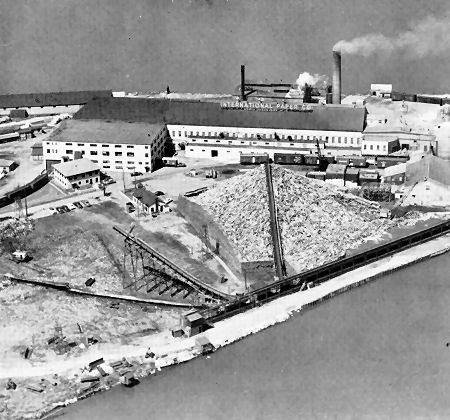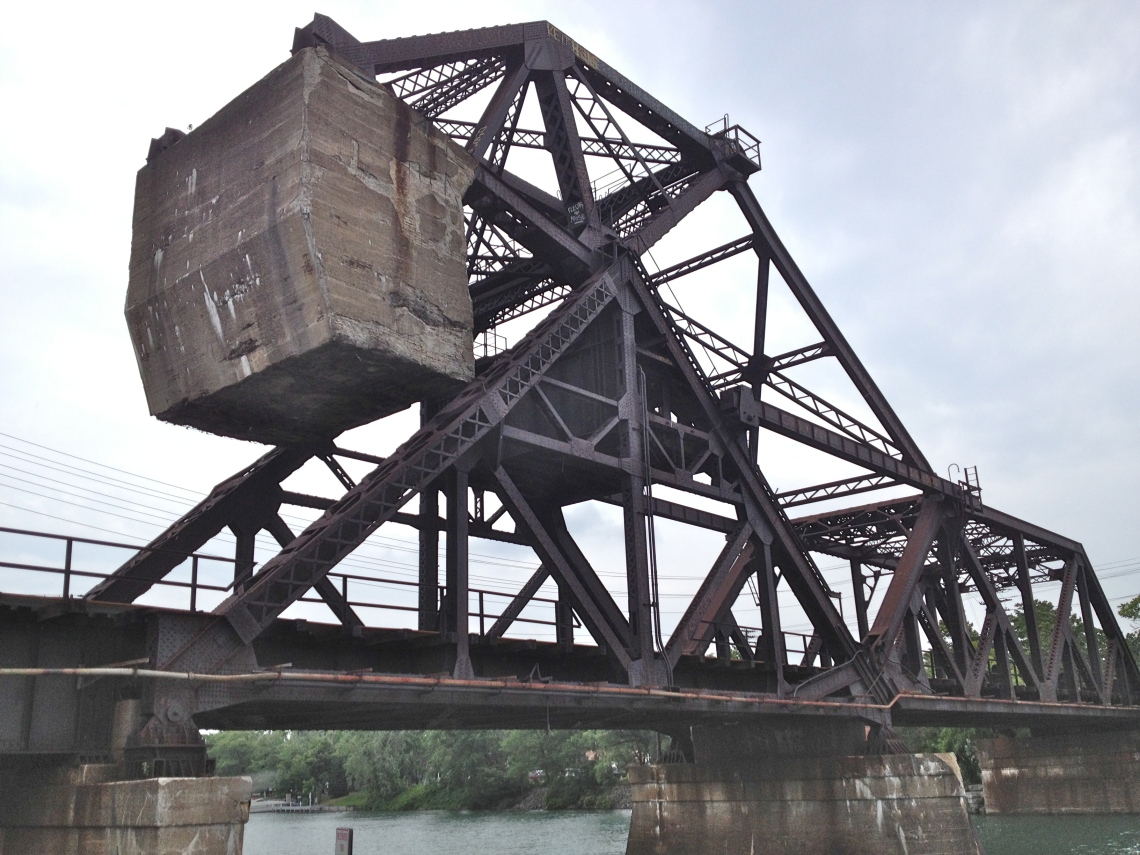
I’ll be starting to build the part of my layout that depicts the two miles of track that ran from the barge canal to the outskirts of Wheatfield. In order to make that happen, I’m looking for photos and anecdotal information related to those two miles of railroad. Some things that would help include photos of:
- Tower 59
- Signal bridge across PC North Tonawanda yard
- any photos showing the yard ladders at either end of the PC yard at North Tonawanda
- industries on both the EL and PC, including those on Tonawanda Island and the Lockport branches:
- International Paper
- International Filler
- R.T. Jones Lumber Co.
- PC (NYC) Freight house
- Gulf gas station at the start of the branch to the island
- various buildings along the west side of the PC yard
- grade crossing photos
- photos showing track geometry and lineside equipment
- Lockport Branch industries such as Wurlitzer, Durez, National Grinding Wheel
- Ashland Oil
- Recreational Warehouse
- Roblin Steel
- Art Gromart Lumber
- Tonawanda Iron
If you know of more things that I should be modelling and therefore gathering information about, please let me know and I’ll add it to my list.




Hi Hunter,
I did a quick Google search and found some interesting industries that were or are in North Tonawanda. You have picked a very interesting place to operate your railway. Much of what was/is manufactured there was/is used all over North America and beyond. I recognized the City name as I have used many products from the area.
Have you contacted the North Tonawanda History Museum and the Historical Society of the Tonawanda’s ? They should be able to help with information and photos. They may also have connections to employees of some of the industries that operated there in 1974 such as the Paper Mill, International Filler, R. T. Jones Lumber Co. and more. Oh yes and maybe some retired railway employees. Worth asking. I know our local Historical Society receives requests for all kinds of information on past railway operations, survey crews that laid out the rail lines, Mill operations, family histories and so much more. The Society networks in the community to find information for some of the requests.
As for International Paper I wonder if they have someone who would be willing to check their archives for a mill layout drawing and maybe a booklet on the North Tonawanda Paper mill operation. Some companies are willing to photo copy information from their archives or tell you where they sent their historical information.
There is a book “Images of America Tonawanda and North Tonawanda 1940 to 1960. Might be of interest.
Just some thoughts to help you search out the information to make your railway part of 1974.
Regards, Rick
LikeLike
Thanks for the suggestions. Much appreciated.
You’re one of the few who sees the attraction of North Tonawanda. I often get laughs and odd looks from modellers when I tell them what I’m modelling. Even after I explain it, some people struggle to get their heads around the appeal. I guess i should be modelling Tehachapi or Horseshoe Curve? The local industries in North Tonawanda are only one side of what makes it an interesting place to model, but there was far more industry in town than I could represent on a model railroad. The rail traffic pattern through town was colourful and included a range of railways beyond the two companies that owned tracks there.
I have contacted the North Tonawanda History Museum but that didn’t get me very far. The person I spoke to gave me the impression that they have a random assortment of artifacts without much in the way of organized archives or detailed information. I’ll have to try again, and arrange to visit them.
I bought the book you mentioned. Very useful for a general overview of the history of both towns. Certainly worth the money.
I suspect that once I start making some connections through the two museums in NT, I’ll be able to fill in some gaps in my knowledge. My challenge is that I get very busy with work, and progress with my hobby can go very slowly at times. And then I make a connection like you and invaluable information floods in. It certainly helps that you can give me insight to the way that paper plants operate.
LikeLike
Hi Hunter,
Yes I can really see NT having a great verity of rail cars and traffic with many different loads coming and going and all in a relative small area. Plus all the through traffic from a number of different railways. I think it is great to have so many different railways and types of traffic. You have done your home work and found an excellent area to model. Oh yes some things will be left out and all will be compressed but still a most enjoyable project.
If the Museum is not to helpful by phone or e-mail a visit would help. A visit in person might lead to some photos not yet cataloged or other information that someone might look up while you are there. Worth a try.
I wonder about the NT Historical Society ? The ones I am familiar with have papers ( both newspaper clippings and personal papers) and books plus some photos. Some people that lived in NT for a long while belong to such a group ( I hope). People that lived in the town for a long while donated their historical papers such as a booklet on one of the industries that celebrated 50 years ( for example) in business or some other major event. I am hoping the NT Historical Society has a number of members that have deep roots and remember people who worked at various industries. The other item I am looking for is a Mill map that contractors, salesmen, deliverymen, and new employees would receive at the Guard house to help get them around the Mill. That map should have rail lines and what buildings are where. Also listed will be roadways inside the Mill property.
With International Paper Co. I wonder if their Public Relations Department would be able to help out with a copy of any information on that NT Mill? or point you in the direction that you can find a map and /or booklet.
I have heard about Insurance Company maps of towns, cities and businesses. I have not used this reference yet but wonder if there will be any information there. The Paper Mill would have insurance and maybe there is a map of the Mill layout. Worth having a look see.
It will take me a little while to type out the workings of a Pulp and Paper Mill so I’ll try break it down into chapters. This will be a while as I go back to work soon.
Regards, Rick
LikeLike
All very good ideas Rick. I have yet to track down the Sanborn insurance maps. I need to find some time to get to North Tonawanda on a weekday and track some of these things down.
I did write to International Paper to request any information that they might have on the plant on Tonawanda Island. A public relations person wrote back asking me for details of why I wanted the info. I didn’t hear back after responding. I have to wonder if they’re afraid to release anything related to that plant because of the circumstances under which it was closed. Or perhaps there’s simply don’t have anything. Regardless, that turned into a dead end.
I’m not letting that stop me. I’m certain I’ll find photos and details about the plant at some point. In the meantime, I have lots of other things that I’m also researching. For instance, there were two jobs that worked from North Tonawanda on the Penn Central. One worked the island and the other worked the Lockport branch and the industries around the yard. I’m looking for more details on how those jobs worked. I also need to find photos of the Tower 59, which controlled the crossing of the EL and PC in North Tonawanda.
LikeLike
Hi Hunter,
I had some more thoughts on obtaining information and photos of the Paper Mill specifically but maybe other industries.
The employees of a Pulp and/or Paper Mill take a lot of pride in being able to do their job. Be it run the Digesters, make Steam, bleach the pulp or turn water and stock into paper or pulp and a dozen other jobs. Most Mill towns have employees who have retired and stayed in the town. In their working life they spend 8 to 12 hours a shift working together so in retirement a lot of Mill towns have a Mill retirement club who get together for lunch once a month. Maybe coffee once a week. Then there is a get together at Christmas where retirees from a few 100 miles away travel back to visit with their workmates. Not sure how to tap into this vast group of knowledge for you. Maybe the Museum or Historical Society. Or someone you meet there. Maybe he Union representing the workers at that Mill have a retirement roster and would pass along your interest in stories and photos from the Paper Mill and someone would respond. Just a thought.
Regards, Rick
LikeLike
I’ll track that down. Thanks Rick.
LikeLike